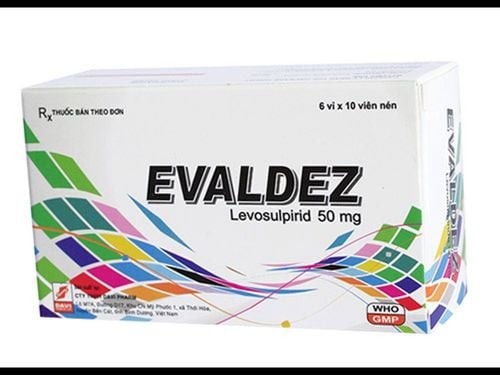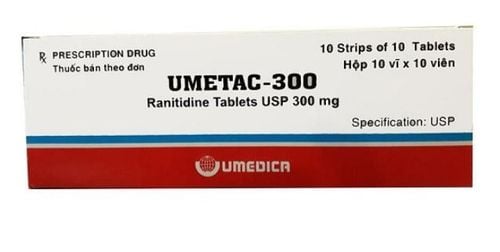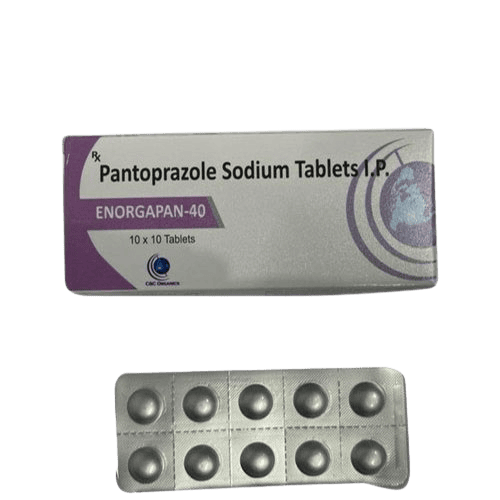This is an automatically translated article.
Axcel eviline 200mg is an antacid, anti-flatulence drug used for the symptomatic treatment of ulcerative diseases of the gastrointestinal tract, dyspepsia, heartburn, flatulence and distention, gastritis and esophagitis and other conditions. acid secretion or other flatulence.1. What is Axcel eviline 200mg?
Axcel eviline contains the main ingredients including:
Magnesium hydroxide content 200mg; Aluminum hydroxide 200mg; Simethicone 20mg. The drug belongs to the group of antacids, anti-reflux and anti-ulcer. The drug is prepared in the form of tablets and is prescribed by doctors in cases of relieving symptoms of peptic ulcers, indigestion, bloating, heartburn, esophagitis - gastritis or cases of increased secretions. other acids.
2. Pharmacodynamic and pharmacokinetic properties of drugs
Pharmacodynamic properties:
Axcel eviline is a balanced combination of 2 antacids and antifoam/antifoam agent simethicone. Two types of antacids are magnesium hydroxide (fast-acting) and aluminum hydroxide (slow-acting). This combination produces a quick start action and increases the total time to cache. Aluminum hydroxide itself is an astringent and can cause constipation. This effect is balanced by the effect of magnesium hydroxide common with other magnesium salts that can cause diarrhea. Pharmacokinetic properties:
Magnesium hydroxide reacts with hydrochloric acid in the stomach to produce magnesium chloride. Small amounts of magnesium salts can be absorbed and excreted in the urine, otherwise excreted in the feces. Aluminum hydroxide reacts with hydrochloric acid in the stomach to form aluminum chloride, part of which is absorbed. Absorbed aluminum is excreted in the urine. Most aluminum remains in the gastrointestinal tract and forms insoluble aluminum salts, including hydroxides, phosphates, carbonates and fatty acid derivatives, which are excreted in the feces. Physiologically, Simethicone is inert. After oral administration, the active ingredient Simethicone is not absorbed from the gastrointestinal tract, nor does it interfere with the absorption of nutrients or the secretion of gastric acid. Simethicone is eliminated in the feces unchanged.
3. Contraindications of the drug Axcel eviline
Patients are allergic to any ingredient or excipients of the drug Axcel eviline . The patient experienced hypophosphatemia. Young children because of the risk of aluminum toxicity, hypermagnesaemia, especially children with dehydration or kidney failure. Patients with severe renal impairment (risk of hypermagnesaemia). Cases of patients with hypersensitivity to magnesium-containing antacids. Patients with intestinal perforation or obstruction (suspected or diagnosed). Use with caution for:
Pregnancy: The drug causes constipation, so it may increase the constipation commonly seen in pregnant women. The drug should not be used during the first 3 months of pregnancy unless absolutely necessary. Lactation: Use caution in nursing women with renal impairment due to the risk of aluminum toxicity in the neonate.
4. Side effects of the drug Axcel eviline 200mg
Axcel eviline 200mg can cause hypophosphatemia, decreased urine phosphate, increased blood magnesium, nausea, vomiting and constipation. High doses can cause intestinal obstruction.
Undesirable effects due to the aluminum hydroxide component:
Osteomalacia, encephalopathy, dementia and microcytic anemia have occurred in people with chronic renal failure using Aluminum hydroxide as a phosphate binder. Hypophosphatemia has occurred with prolonged or high doses of the drug. Aluminum toxicity and osteomalacia may occur in patients with high blood urea nitrogen syndrome. Common: Constipation, dry mouth, hard stomach, nausea, vomiting, solid stools, white stools. Uncommon: Hypophosphatemia, hypomagnesaemia. Undesirable effects due to ingredients Magnesium hydroxide:
Common: Bitter mouth, diarrhea (when overdose). Uncommon: Vomiting or nausea, abdominal stiffness.
5. Drug interactions
Axcel eviline 200mg reduces the absorption of other drugs, typically Tetracycline and vitamins, if used together with Quinidine, the drug will slow down absorption. Concomitant use of Magnesium hydroxide increases the absorption of Warfarin.
Drug interactions due to the composition of Aluminum hydroxide:
Concomitant administration of Digoxin, Indomethacin, Tetracycline, iron salts, Isoniazid, Corticosteroids, Allopurinol, Benzodiazepine, Phenothiazine, Ranitidine, Penicillamine, Ketoconazole, Itraconazole may reduce the absorption of these drugs. this drug. Therefore, if you have to take this medicine together, you need to take this medicine away from antacids. Drug interactions due to the magnesium hydroxide component:
When used in combination, all antacids decrease or increase the rate or extent of absorption of other drugs, or by altering the time it takes the drug to be absorbed in the tube. digestion, or by binding to them. Magnesium hydroxide has the strongest drug binding ability. Decreased effect of Digoxin, Tetracycline, Indomethacin or iron salts because the absorption of these drugs is reduced. Drugs that increase the effect: Amphetamine, Quinidine (because they are reduced in elimination). Drug Interactions Due to Simethicone:
Concomitant use of Levothyroxine and Simethicone may reduce the absorption of Levothyroxine, leading to a decrease in the effectiveness of Levothyroxine, causing hypothyroidism. If these two drugs are used concurrently, they must be taken at least 4 hours apart. Monitor TSH levels and/or other assessments of thyroid function when starting or stopping simethicone during levothyroxine therapy.
6. Be careful when using drugs
Aluminum hydroxide can cause constipation and an overdose of magnesium salts can cause decreased bowel movements. Large doses of this product may cause or worsen bowel obstruction. Aluminum hydroxide is not well absorbed from the gastrointestinal tract and systemic effects are rare in patients with normal renal function. However, overdose or long-term use, even at normal doses, in patients on low phosphorus diets can lead to phosphate depletion with increased bone resorption and hypercalciuria. In patients with renal failure, plasma concentrations of aluminum and magnesium are both increased. In these patients, long-term exposure to high doses of aluminum and magnesium salts can lead to encephalopathy, dementia, microcytic anemia, and exacerbation of dialysis-induced osteomalacia. Aluminum hydroxide may not be safe in patients with porphyria on hemodialysis. Prolonged use of antacids should be avoided in patients with renal impairment. This product contains sorbitol (E420). Patients with rare hereditary problems of hereditary galactose intolerance, the Lapp lactase deficiency or glucose-galactose malabsorption should not take this medicine. Simethicone should not be used to treat colic in children because there is not enough information on the benefits and safety for this age group. Do not exceed the recommended dose. Avoid drinks with Bicarbonate (soda or soft drinks) or foods that can increase the amount of gas in the stomach. The drug contains the ingredient Methylparaben, so it can cause allergic reactions.
7. How to use Axcel eviline 200mg effectively
How to use:
The drug is taken orally directly. Chew the tablet thoroughly before swallowing, take it 20 minutes to 1 hour after eating and before going to bed. Dosage:
Adults (including the elderly): Take 1 to 2 tablets x 4 times/day. Not recommended for use in children. When drug overdose occurs, hypophosphataemia can be managed by concurrent administration of high doses of phosphate, hypermagnesemia can be managed by intravenous administration of 10 to 20 ml of 10% calcium gluconate injectable solution.
Above is information about the uses, dosage and usage of Axcel eviline 200mg. Patients should carefully read the instructions for use, consult a doctor before use.
Please dial HOTLINE for more information or register for an appointment HERE. Download MyVinmec app to make appointments faster and to manage your bookings easily.













